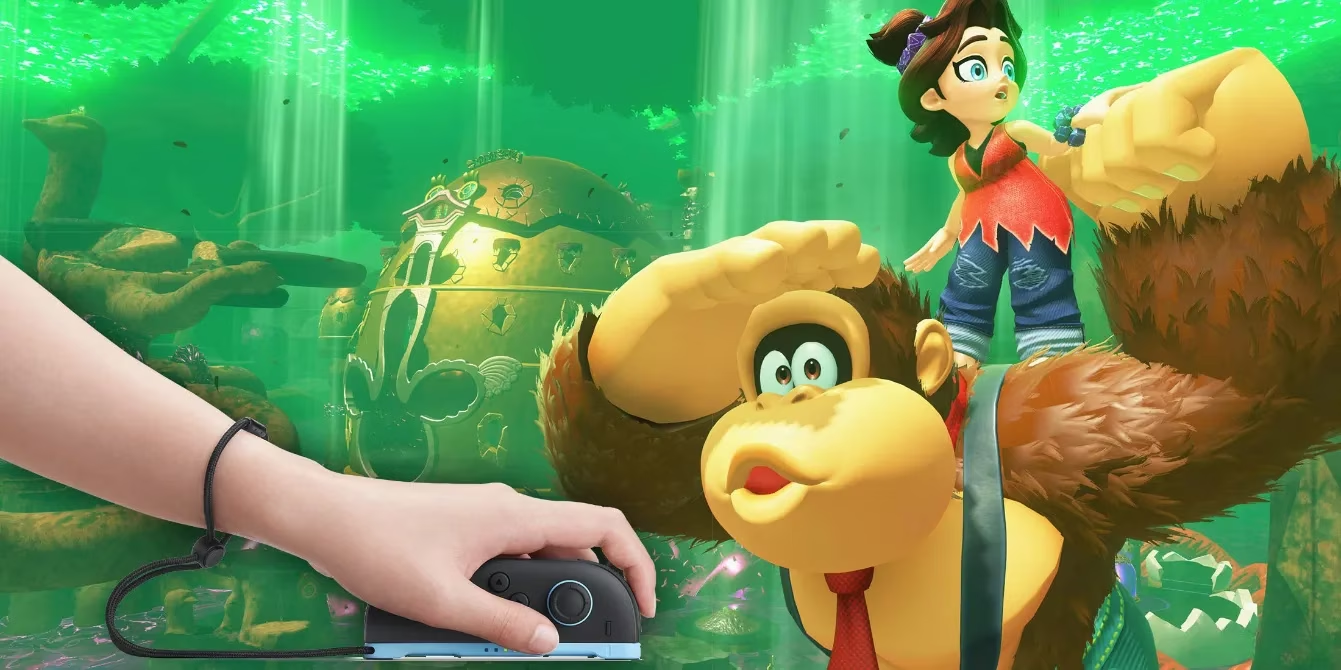Donkey Kong Bananza: Showcasing Nintendo Switch 2's Innovative Mouse Functionality
Nintendo Switch 2's innovative mouse functionality shines in Donkey Kong Bananza's co-op mode, revolutionizing gameplay with seamless, fun, and creative control.
Nintendo's latest blockbuster title, Donkey Kong Bananza, has quietly emerged as the premier showcase for one of the Switch 2's most innovative yet understated features. While much of Nintendo's marketing machine has been focused on the console's GameChat social capabilities, it's the new mouse functionality that's finding its true potential in the jungles of DK's latest adventure.
The Nintendo Switch 2, true to Nintendo's legacy of hardware innovation, introduced several new features when it launched earlier this year. Among these, the ability to turn Joy-Cons sideways and use them as mouse-like pointing devices initially seemed like an afterthought compared to the more heavily promoted GameChat system that's been dominating multiplayer experiences in titles like Mario Kart World.

Early adopters of the Switch 2 found limited applications for the mouse functionality at launch. Games like Fortnite, Cyberpunk 2077, and Civilization 7 offered compatibility, but the experience felt somewhat unpolished, requiring manual tweaking in settings menus to achieve satisfactory control. Many players simply reverted to traditional control schemes, leaving the mouse feature feeling like an interesting but ultimately unnecessary addition to Nintendo's hardware arsenal.
That perception is changing with Donkey Kong Bananza's clever implementation of the technology. While the single-player campaign sticks to conventional controls, it's the local co-op mode where the mouse functionality truly shines. One player navigates as DK using standard Joy-Con controls, while their partner transforms their controller into an interactive pointer, aiming at terrain, absorbing materials, and firing them back into the environment via an on-screen cursor.
"It's like they've finally figured out what to do with that weird mouse thingy," remarked one enthusiastic player at a recent gaming convention. "My kid brother and I spent hours just messing around with the environment—it's stupidly fun!"
DK Artist: Unleashing Creativity
Perhaps even more impressive is the game's "DK Artist" mode, which draws inspiration from Super Mario 64's iconic face-manipulation menu screen. This creative suite allows players to carve, sculpt, and paint various in-game models using the Joy-Con's mouse functionality. While not the game's central attraction, this feature provides hours of entertainment and showcases the precision possible with Nintendo's new input method.
The implementation feels natural rather than forced—something Nintendo has occasionally struggled with when introducing new control schemes. There's a genuine sense that the developers asked, "How can we make this feature fun?" rather than "How can we force players to use this feature?"
The Future of Mouse Control on Switch 2
Looking ahead, several upcoming titles are set to expand on what Donkey Kong Bananza has started:
-
Super Mario Party Jamboree + Jamboree TV (July 24, 2025)
-
No Sleep For Kaname Date - From AI: The Somnium Files (July 25, 2025)
-
Drag x Drive (August 14, 2025)
-
Inazuma Eleven: Victory Road (August 21, 2025)
-
Metroid Prime 4: Beyond (TBA 2025)
-
Mouse Work (TBA 2025)
The dedicated "Mouse Work" title is particularly intriguing, suggesting Nintendo may be developing a game specifically designed around the functionality, similar to how Wii Sports showcased motion controls on the original Wii.
Finding Purpose in Periphery
What makes Donkey Kong Bananza's implementation of mouse controls particularly noteworthy is how unobtrusive it is. While other launch titles seemed to incorporate the feature out of obligation, Bananza integrates it naturally into specific gameplay scenarios where it genuinely enhances the experience.
Industry analysts have noted that Nintendo's approach with the Switch 2 appears more measured than previous hardware generations. Rather than building the entire console experience around a single gimmick, they've created a suite of optional features that developers can implement where appropriate.
"They're not shoving it down our throats this time," noted veteran game designer Hideo Matsumoto. "It's just there when you need it, and that's honestly refreshing."
The question remains whether mouse functionality will become a staple of the Switch 2 experience or fade into obscurity as developers focus on more traditional control schemes. Much depends on whether future titles can build upon what Donkey Kong Bananza has started, finding natural implementations that enhance rather than complicate gameplay.
As Nintendo continues to refine the technology through firmware updates, and as developers become more comfortable with its implementation, we might see increasingly creative applications emerge. Could we see a revival of point-and-click adventure games? RTS titles that actually work on consoles? The potential is certainly there.
For now, Donkey Kong Bananza stands as the unexpected champion of a feature that might otherwise have been dismissed as a novelty. In Nintendo's world, sometimes the most significant innovations aren't the ones that make the biggest splash at launch, but rather those that quietly find their purpose through thoughtful implementation in the games that follow. The mouse functionality might just be finding its groove in the jungle—where exactly it swings from here remains anybody's guess. 🍌🎮
